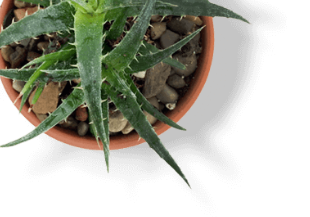With all the industrial BOOM and the impact on resources that this revolution has caused, it is not surprising that we are suffering from an environmental crisis that deserves to be taken into consideration. Technology has been a consequence of development, but this can, in turn, serve to alleviate the deterioration of the environment.
Currently, the relationship between nature and technology must be understood, rather than as something opposed, as something interconnected, so that both can collaborate without harming each other. The trend rather seeks the opposite, as allies, they must work to benefit each other.
The constant growth of the Internet of Things (IoT) has encouraged the development of environmental control applications. The technology of connected things can even reduce pollution. Thanks to the IoT, vital information is generated that avoids leakage of toxic spills, misappropriation of natural resources or excessive use of chemical products, for example. Besides, the information released from the Environmental IoT serves to know the polluting trends to carry out prevention actions.
At AppStudio, as experts in IIoT and automation and control, we want to give visibility to the application of IoT in the environment. For that reason we will talk about the benefits that the inclusion of technology in the environment can generate. Unfortunately, it should be clarified that the relationship between IoT and the environment is not yet fully exploited.
What are Environmental Problems?
Environmental problems are the harmful effects on the ecosystem that arise from different human activities, generally as unwanted and more or less accidental consequences.
When these types of problems are not corrected in time, they cause an unpredictable change in the environment that, in the long run, usually results in environmental disasters, that is, tragic and catastrophic situations that involve (and come from) the deterioration of the environment. .
Environmental problems are one of the main challenges of the industrialized world, whose continued production of consumer goods also requires the continued entry of raw materials, extracted directly from nature. In that sense, the impact that the Industrial Revolution and the urban way of life has had on the global ecosystem has meant much more vertiginous changes than in the rest of the history of mankind.
That is the reason why numerous national and international organizations struggle to promote ecological legislation in most countries and to reach agreements that prevent or at least slow down the pace of environmental deterioration as a consequence of our life model.
There are many forms of environmental problems, some with a greater impact on the environment, which makes them urgent to attend, and others more innocuous and simple instead. The main ones today would have to be:
Deforestation
It is understood by the indiscriminate felling of forests and green areas to use their wood in various industries (paper, wood, etc.) or to allocate the land to agricultural or livestock activities. This process, which began prehistoric humanity in its way, never occurred at a rate as fierce as it is today, so much so that it is imperative to reseed forests to create a counterweight. The absence of trees deteriorates the soil, leaves it exposed to erosion, decreases the amount of oxygen in the world and increases that of atmospheric carbon, contributing to increase the average temperature of our planet.
Pollution
It refers to the adulteration of water, earth or air by the addition of chemically reactive substances, capable of destroying ecosystems, making water unusable or generating diseases in both humans and other life forms. This problem is one of the most serious, since it also causes destructive phenomena such as acid rain (contaminated rain), toxic accumulation of plastic or acidification of the seas, for example. All this translates into chemical changes that are too fast, which do not give room for life to adapt to them, or to remedy them in their way.
Global Warming
The planet is getting hotter, at a much faster rate than it had in past times, and the logical responsible for it is the human being. Most industrial activities, from livestock to burning fossil fuels , flood the atmosphere with carbon derivatives (carbon monoxide or carbon dioxide ), which not only impoverish air quality, but remain in the atmosphere preventing the normal release of heat, and thus generating a greenhouse effect which is already melting the perpetual snows of the poles and increasing the level of the waters. This translates into climatic changes of intensity, creation of new deserts, floods and the destruction of the planet’s meteorological balance.
Loss of Biodiversity
The extinction of numerous species, due to the destruction of their habitat or the contamination of the same, or to the intrusion of the human being in their trophic chains, causes imbalances in the biological circuits that can become critical for the world. For example, the gradual but constant disappearance of bees is leaving plants without pollinators, which would result in loss of genetic variety and impoverishment of plant species.
Benefits of IoT in Tackling Environmental Issues
One of the benefits of IoT is the optimization of waste management through smart containers to reduce pollution. Along these lines, recent studies ensure that by the time the Environmental IoT is applied worldwide, the CO2 emission could be reduced by 19 tons. In case this data is not enough, according to a report by the Boston Consulting Group, the application of IoT in the environment could reduce climate change by up to 16.5% by 2020.
The IoT also has applications in agriculture, which make it possible to regulate the use of chemical products. The humidity level is analyzed to reverse the fair and necessary water to irrigate the fields, for example. Also, data are obtained for the dispersion of precise amounts of pesticides and other substances. A concrete example would be how water consumption in blueberry farms in Chile was reduced by 70% thanks to the Environmental IoT.
The implementation of the Environmental IoT enables a series of actions such as the efficient energy management of Smart Cities, the use of Smart Grid devices (smart electricity distribution networks) and the management of industrial production.
The Environmental IoT is not only responsible for protecting the environment itself, but also seeks to promote the protection of wildlife. In Canada, for example, Eastern Cougar, in danger of extinction, wear smart collars that keep them geolocated. The information that emerges from these accessories allows scientists to study the behaviors of these animals to try to facilitate their coexistence. Also, they are monitored with drones, which are less invasive than humans. In the future, it is expected to replace the collars with subcutaneous sensors for greater comfort of the Eastern Cougar.
Most applications of IoT to the environment are carried out by sensors. There are very small devices that generate useful data to take measures for the environment.
Environmental IoT Sensors To Take Care of The Environment
Environmental IoT sensors can measure parameters such as air or water quality. Also, they allow to detect harmful chemicals in the environment. All this can be applied to hard-to-reach areas that would otherwise be almost impossible to analyze. Some of the IoT sensors created to generate environmental data are:
- Forest Fire. It monitors the combustion of gases and the ideal conditions of fire generation to define alert zones.
- Air Pollution. It controls the CO2 emissions of the factories, the pollution emitted by the vehicles and the toxic gases generated in farms.
- Landslide and Avalanche prevention. Monitor the vibrations and density of the earth to detect dangerous patterns in the ground.
- Portable water monitoring. Control the quality of drinking water in cities.
- Chemical leakage detection in rivers. Detects leaks and toxic spills from factories in rivers.
- Pollution levels in the sea. It controls in real time the spillage of toxic products in the sea.
- Water leakages. It detects the presence of liquid outside the tanks and the variation of pressures in the pipes to prevent filtration.
Unfortunately, over the years some IoT devices will become obsolete. For this reason, the collection of all the tools that are losing their usefulness should be planned.
The IoT is, in short, a double-edged sword especially when applied to the environment. It has endless advantages and can help prevent the health of our planet from getting worse, but we must bear in mind that these devices can also have an impact on the environment. Controlling the data offered by these devices will allow us to maintain an ecological industry if we take measures based on the information they generate.
It is a fact that the environment is threatened and that its conservation is a priority today. Technology can help with conservation and therefore IoT can be used in the environment. The question is how can the internet of things help protect the environment? The AppStudio team has started to investigate and is already being used to preserve it and help to have a better world.
The internet of things is being used in a multitude of very different sectors between them, and environmental conservation was not going to be less. Currently, a multitude of projects are being developed to protect the planet in which IoT is included.
Environmental Sensors
The sensors have evolved a lot in recent years and are essential in the environment to measure parameters such as air or water quality. These sensors arrive where the human being cannot, for example to inhospitable places where the life of a human being could be endangered or simply to places that he cannot reach because they are not accessible.
The great advantage of these sensors is that you can check the quality of the air or water in real time, this is a great advantage for the whole society. Although there is a sector of society to which this information is very useful, they are the people who suffer from asthma. In our mobile we can check the air quality in real time, anywhere in the world.
Sensors for Agriculture
The IoT in the environment is essential especially in agriculture. Achieving sustainable agriculture is essential in environmental conservation and this is achieved through sensors. These sensors are already being used in greenhouses and large crops to control the irrigation of plants. With these sensors a large amount of water is saved, because they only irrigate the plant when it needs to have moist soil. With the control of the irrigation of the great agricultural extensions a great amount of water can be saved. The implementation of this technology is very useful in areas that suffer major droughts.
To Say Good-Bye…
The IoT in the environment has a positive impact, since this technology can prevent climate change and help in the conservation of endangered species. Each time it is being used in a greater number of projects in favor of the environment, so the future of the internet of things in this field will increasingly take on a greater role.
These are just some of the projects that have been a success using this technology in the environment. And you, if you want to contribute towards environment, do contact us. Together, we can transform the current lifestyle of humans and alter the process of destruction of nature.
Also Read
How IoT Became More Popular During Covid-19?
Best IoT Development Companies in Texas
10 Predictions and Trends of the Internet of Things in 2020
Top IoT Mobile Application Development Trends to Anticipate in 2020
Top IoT Development Companies in Boston
Recent Articles
The Top 10 Successful App Developers...
Hiring an app developers company is no easy feat. In...
Top 10 Innovative Mobile App Developers...
San Francisco has an incredibly diverse and a magnificent tech...
Top 10 Most Trusted Mobile App...
Houston boasts of a splendid tech landscape that is mushrooming...






